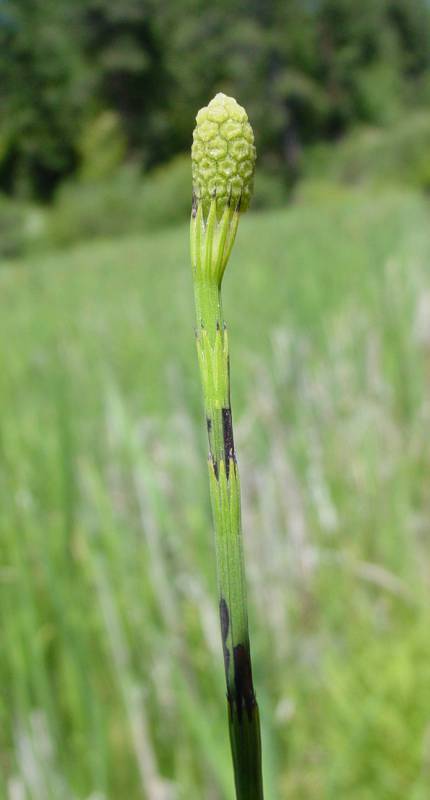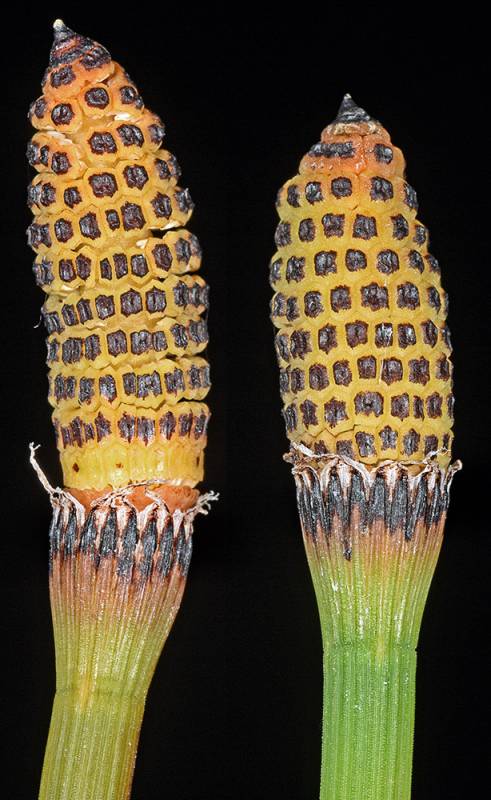Equisetum palustre
Equisetum ×ferrissii
marsh horsetail
Ferriss' scouring rush
Branches few and irregular to many and whorled, 5- to 6-angled, simple.
None
Cones pedunculate, blunt, deciduous.
Cone tip pointed; spores white and mishappen.
Equisetum palustre
Equisetum ×ferrissii
Occurring on both sides of the Cascades crest in Washington; Alaska to California, east across the northern U.S. and Canada to the Atlantic Coast; circumboreal.
Occurring chiefly east of the Cascades crest in Washington; southern British Columbia to California, east across most of North America to the Atlantic Coast.
- Local floras:
BC,
CA,
OR,
WA
- Local Web sites:
CalFlora,
CalPhotos,
Flora NW,
PNW Herbaria
WildflowerSearch
iNaturalist (observations)
USDA Plants Database
- LBJ Wildflower Center
- SEINet
- Plants of the World Online
- Encyclopedia of Life
- Wikipedia
- Google Image Search
- Local floras:
BC,
CA,
OR,
WA
- Local Web sites:
CalFlora,
CalPhotos,
Flora NW,
PNW Herbaria
WildflowerSearch
iNaturalist (observations)
USDA Plants Database
- LBJ Wildflower Center
- SEINet
- Plants of the World Online
- Encyclopedia of Life
- Wikipedia
- Google Image Search



